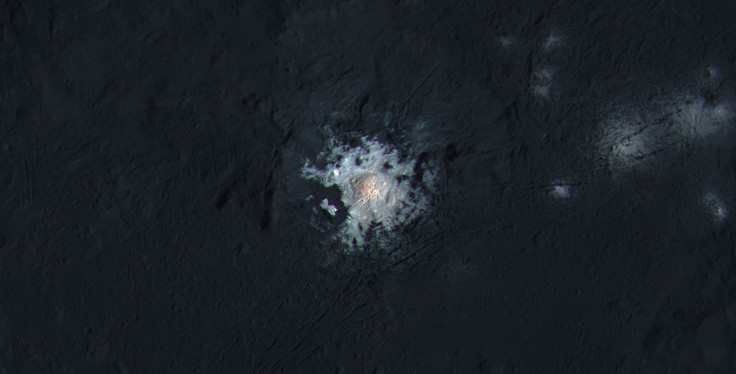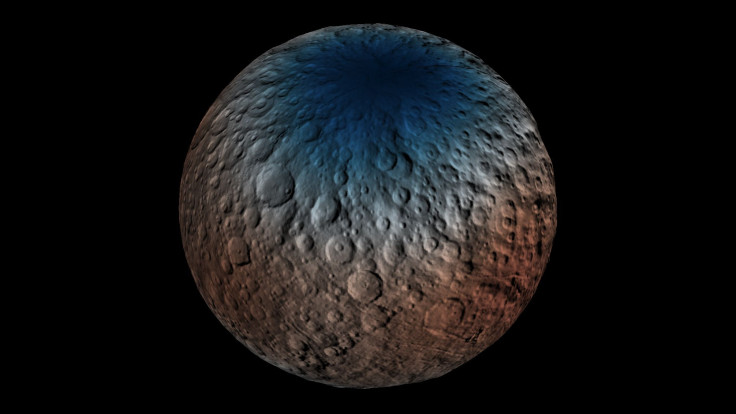Ceres’ Intriguing Bright Spots Revealed In Unprecedented Detail By NASA’s Dawn Spacecraft

Since March 2015, when NASA’s Dawn spacecraft entered into orbit around Ceres — a dwarf planet in the asteroid belt between Mars and Jupiter — a clump of bright spots on its surface has mystified scientists. Now, in some of the most detailed images of ceres’ surface ever taken, this region — known as the Occator Crater — has been laid bare.
The images, captured by Dawn from a height of 240 miles, reveal a dome, crisscrossed by several linear features and fractures, in a smooth-walled pit in the bright center of the crater. Prominent fractures are also seen surrounding the dome, running through smaller, bright regions found within the crater.
According to the authors of an earlier study, the bright spots are most likely exposed inorganic salts — a type of magnesium sulphate called hexahydrite. These minerals are also found on Earth, occasionally at the rim of salt lakes.
Since the dwarf planet lacks an atmosphere, water on its surface would have rapidly vaporized, leaving only the magnesium sulphate spots.
“Before Dawn began its intensive observations of Ceres last year, Occator Crater looked to be one large bright area. Now, with the latest close views, we can see complex features that provide new mysteries to investigate,” Ralf Jaumann, planetary scientist and Dawn co-investigator at the German Aerospace Center in Berlin, said in a statement. “The intricate geometry of the crater interior suggests geologic activity in the recent past, but we will need to complete detailed geologic mapping of the crater in order to test hypotheses for its formation.”
In addition to the pictures of Occator Crater, NASA also released several detailed images of ceres’ surface, including one of the irregularly-shaped Haulani Crater. Data from two of Dawn's instruments — the Gamma Ray and Neutron Detector and the visible and infrared mapping spectrometer — were also used to create a global portrait of Ceres' chemical makeup.

“Although impact processes dominate the surface geology on Ceres, we have identified specific color variations on the surface indicating material alterations that are due to a complex interaction of the impact process and the subsurface composition,” Jaumann said in the statement. “Additionally, this gives evidence for a subsurface layer enriched in ice and volatiles.”
© Copyright IBTimes 2024. All rights reserved.






















